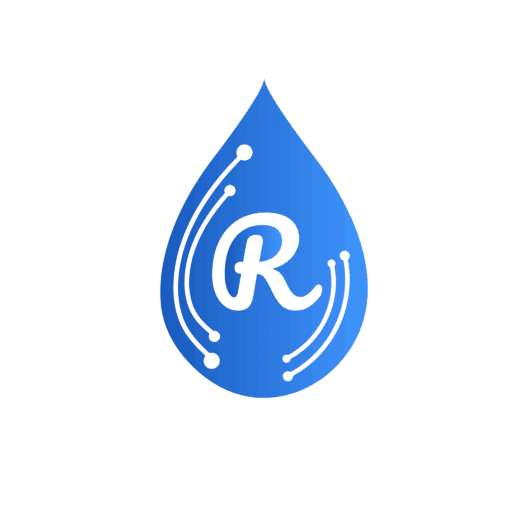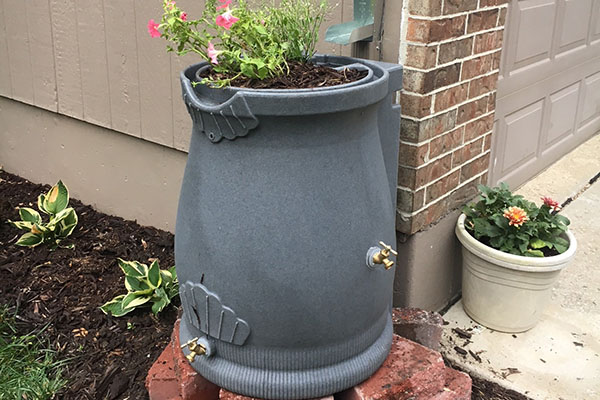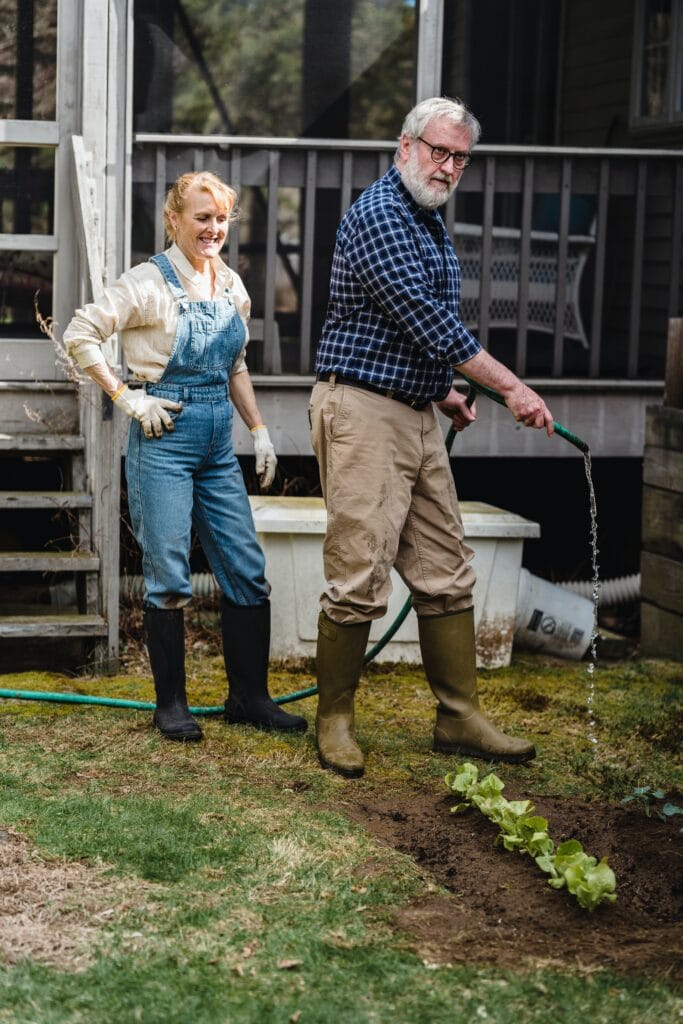Did you come to this post looking for rain barrel ideas and information? You’re not alone! With summer technically just starting and the heat index in many areas hitting record highs, many property owners are thinking of creative ways to maintain their yards or keep their soils drought resistant. Using rainwater is one of the best ways to maximize Mother Nature, plus a great utility savings hack.
With Rainplan, we often have people asking if we can find them rain barrel discounts or federal tax credits for rainwater harvesting. The answer? Absolutely yes. In most cities, rainwater or residential cisterns have a stormwater incentive attached to them. There’s a misconception that collecting rainwater is illegal in some states, and that’s simply not true. Each city has specific mandates about what material you can use to collect rainwater, what size of rain barrel you can install, and how many gallons you can collect during each rain event. It’s not illegal in states, there is only some fine print you need to read first. Let’s break down some rain barrel ideas and concepts like: rain barrel uses, benefits of a rain barrel, rain barrel mosquito prevention, how to use a rain barrel, and drip irrigation from a rain barrel.
Benefits of a Rain Barrel
If this isn’t your first time on our blog, you have likely seen many posts about the benefits of rain barrels. Or posts about residential cisterns. However, to recap the benefits of rain barrels:
- Save money on your water bills.
- Store and keep your watering schedule consistent during droughts.
- Prevent water runoff from your yard and help with neighborhood water pollution.
- You can also save on stormwater fees in some areas by installing a rainwater capture system.
Rain Barrel Uses
To break the benefits even further, let’s discuss rain barrel uses. The most obvious is that you are, of course, capturing water to store and use rainwater during times of drought. You can take this advantage even further and install different systems to help monitor and water your property throughout the year. For example…
Drip Irrigation from a Rain Barrel
Drip irrigation is a rigged watering system that uses small amounts of water to slowly drip water to the roots of plants. These systems can be built underground or on top of the soil, but either option is a water conservation technique that consistently maintains soil moisture. Not only are drip irrigation systems suitable for water usage, but they also prevent overwatering, and damaging leaves and growing weeds, and they decrease maintenance.
When drip irrigating from a rain barrel, you are doubling down on reusing water and conserving water usage on your property. Drip irrigation from a rain barrel is often called a gravity drip system because you are not relying on setting up a pressurized watering system. You let gravity move the water from your rain barrel and down into the pipes watering your plants. You can read more about how to set up a rain barrel drip irrigation system here.
How to Use a Rain Barrel
Like many things in life, you must do a little prep work before installing and correctly using your rain barrel. Things to consider before you go out and purchase a rainwater capture system or a residential cistern.
- For a federal tax credit for rainwater harvesting, you will want to read the fine print of your municipal city codes and the incentive program to manage your paperwork. Each city has different “rules” for how large your rain barrel is, the material it is made of, and how and where it is installed for you to get a rain barrel rebate.
- You usually need to purchase a rain barrel and have it connected to a roof downspout before you can apply for a rain barrel rebate. Wondering what rebate programs are offered for your property? That’s what we do! Use our search engine to find incentive programs in your area.
- Depending on where you live, the material of your rain barrel matters. For example, while the least expensive, plastic barrels can easily crack in cold weather climates unless you keep a careful eye on them.
- Speaking of cracking, know that with a rain barrel, maintenance is involved. You need to disconnect your barrel from the downspout every winter, dry it out, and store it so you can protect the material, and water won’t get in it and freeze over.
- Once you have done your research on materials and maintenance, the next step is ordering a barrel-whether from an online store or directly from your municipal government.
- To install, we recommend watching this handy installation guide. If you are doing an underground cistern system, that’s a whole other ball game and will require a professional to help with that installation.
Rain Barrel Mosquito Prevention
A common concern is creating environments for mosquitos and other water bugs with rain barrels. Mosquito larvae are one reason why many cities used to ban the use of rain barrels over a specific size and area. The key, however, is that with modern design updates and proper care, your rain barrel won’t be a breeding ground for pesky insects. For rain barrel mosquito prevention, keep these few things in mind:
- You can order rain barrels with built-in mosquito screens that keep bugs away from the water source. Do not install your own screen system until you research the type of netting and screen you need to keep these bugs out.
- Keep your intake opening (where the downspout and your rain barrel’s hole meet) covered with a screen and tightly sealed. Some people recommend using a double layer for the screen.
- Ensure your overflow port (a knob in the middle of the barrel that you can open and close to during heavy rainfall) is closed when you are not using it.
- Keep your outflow valve (the spout where water flows out of the barrel and is usually located towards the bottom) turned off when not in use, and put small screens around the opening to deter bugs.
- If you suspect mosquito larvae have already started forming inside the barrel, you must empty the barrel, completely dry it out, redo your screens and check for faulty valves.
- Most importantly, don’t let water stand in your barrel for too long, or if you have a barrel with decorative tops, don’t let water pool in these areas.
Creative Mosquito Prevention in Rain Barrels
The above is a sure way to keep mosquitos out of your rain barrel, but if you are looking for even more creative ways to prevent mosquitos in your yard, here are a few suggestions.
- Put some vegetable oil in your rain barrel. The oil suffocates mosquitos when they try to land. You need to put a 1.4 cup of oil each week in the barrel, however, to maintain this.
- Mosquito dunks are one way to keep mosquitos out. You purchase these tablets made of safe bacteria (even safe for beneficial insects like bees and butterflies) and dissolve them in your rain barrel. Make sure you get tablets specifically made for ponds.
- Goldfish. A crazy idea and likely not the best option for most people, but if your rain barrel is in a mild climate and out of direct sunlight, goldfish will eat your mosquitos for you. Of course, you must bring them inside before winter; some might feel like keeping fish in the dark tank is rude.
What’s a Residential Cistern
For those looking to go full-on with your rainwater collection, and if you live in areas with heavy rain or have a large roof area (such as a business park, etc.), a residential cistern might be best for you. Cisterns collect more water per gallon than a rain barrel and require a professional to come out and help set it up due to size. Some people opt for smaller cisterns above ground, and others are more inclined to bury their system and keep it underground.
Rain barrels, on average, hold up to 55 gallons of water, whereas a cistern can hold on average 20,000 gallons.
The benefits of a cistern over a rain barrel are that you can water more areas with a cistern, collect more rain, are pressurized systems, so you have more control of where and how you water, pulse they require less yearly maintenance since they are not prone to cracking in winter months. They are usually made of stainless steel, although you can get them in plastics too. Another benefit is that for some cistern systems, you can integrate it into your try water usage. For example, connect it to plumbing, so you use cistern water to flush toilets.
Remember that while cisterns have the largest capacity to maximize your water savings and bills, they require heavier upfront costs due to their size and the need to build structural support before installing. Also, some residential cisterns are not legally allowed in some states due to their large capacity. Or you will get fined for installing.
Is rainwater harvesting illegal?
This brings us to common questions and a popular misconception about rainwater barrels and residential cisterns. We hear all the time that “my city doesn’t allow it,” when nowhere in the United States is it illegal to collect rainwater. HOWEVER, many cities have certain restrictions on what you can install, HOW MUCH rainwater you collect, and how much rainwater usage you are allowed. Most of the northeast states highly encourage rainwater harvesting due to delivering rainfall. Your mid-west states tend to allow all types of rainwater collection, but they don’t incentivize it as much, and then your southwestern states have more restrictions on collection. (These are trends that fluctuate every year).
The takeaway is that no state makes it illegal to harvest your rainwater. You only need to read what codes your city has and what the restrictions might be.
Here’s a good rule of thumb, if your municipality or state offers a rainwater harvesting federal tax credit, you are allowed to collect rainwater.
The misinformation is a huge reason our incentive match search engine was created, and we encourage people to use it. Type in your property address to see if rainwater harvesting, rain barrel rebates, or residential cistern systems offer free money to install these projects in your area. Or a very popular program is where cities offer free rain barrels to residents.
You can discover what rainwater usage options you have in your area by searching your property address here.
The benefits of rain barrels and controlling the water on your property are crucial in keeping your property sustainable. Your property is an investment, and finding ways to maintain and keep it healthy are ideal.





